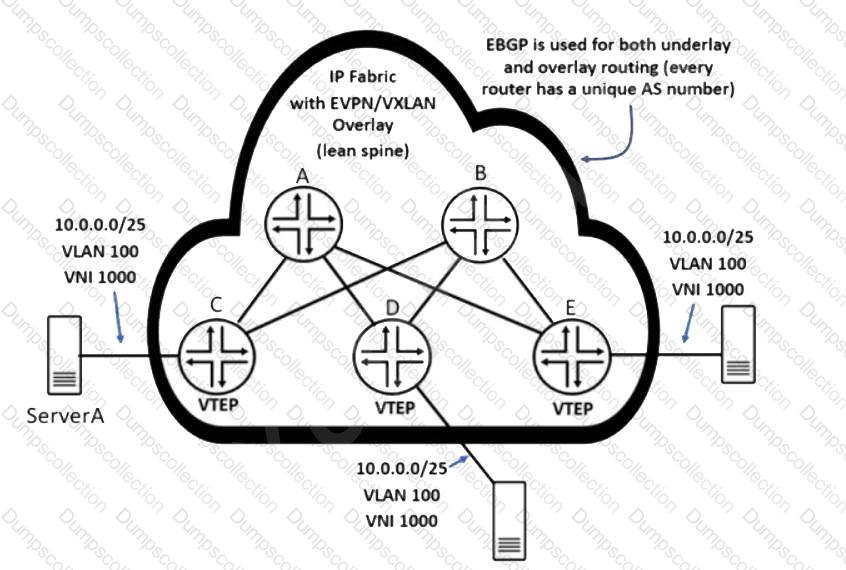Juniper Enterprise Routing and Switching Professional (JNCIP-ENT) JN0-649 Exam Dumps: Updated Questions & Answers (November 2025)
Referring to the exhibit, traffic ingresses on interface ge-0/0/3 and egresses on interface ge-0/0/4.
Which queue does traffic with the IP precedence value of 100 use?
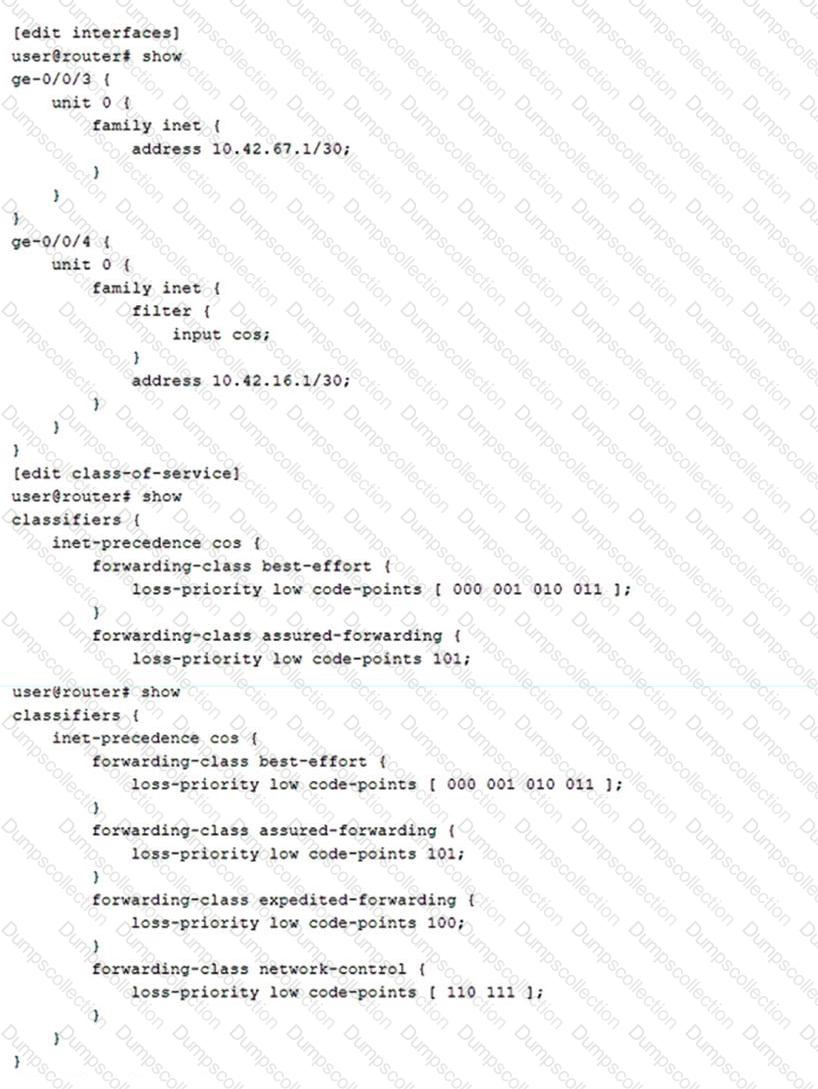
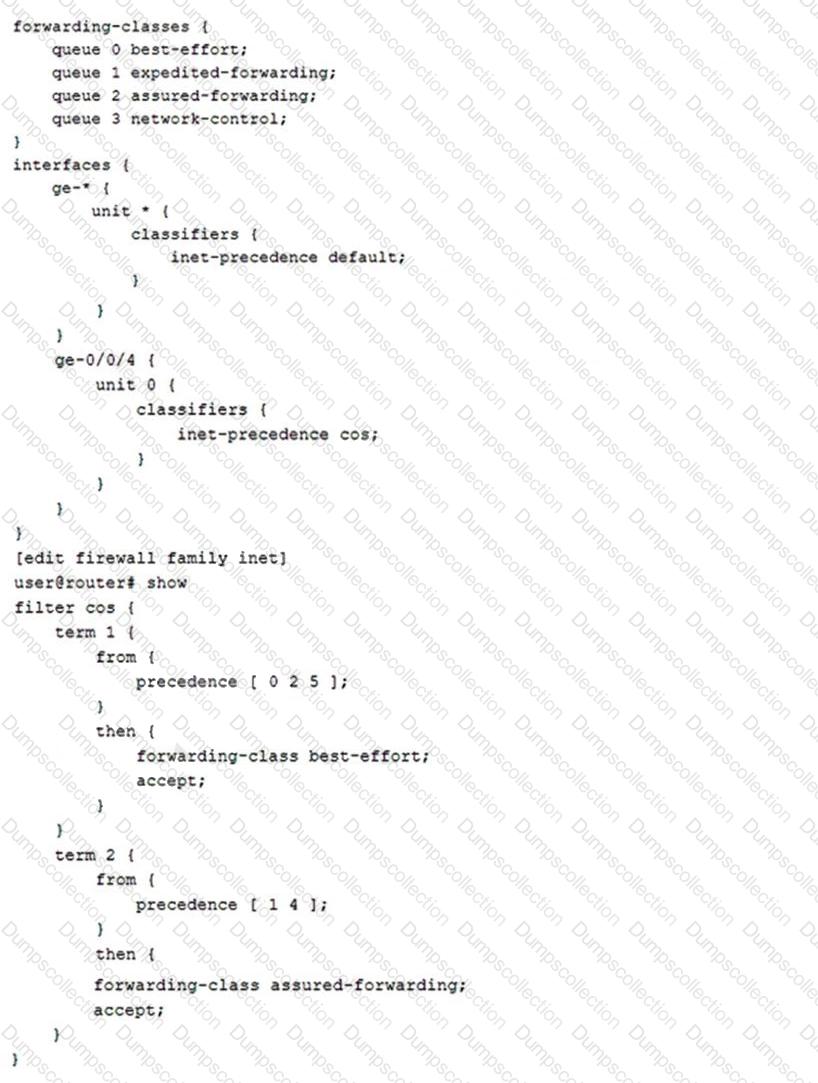
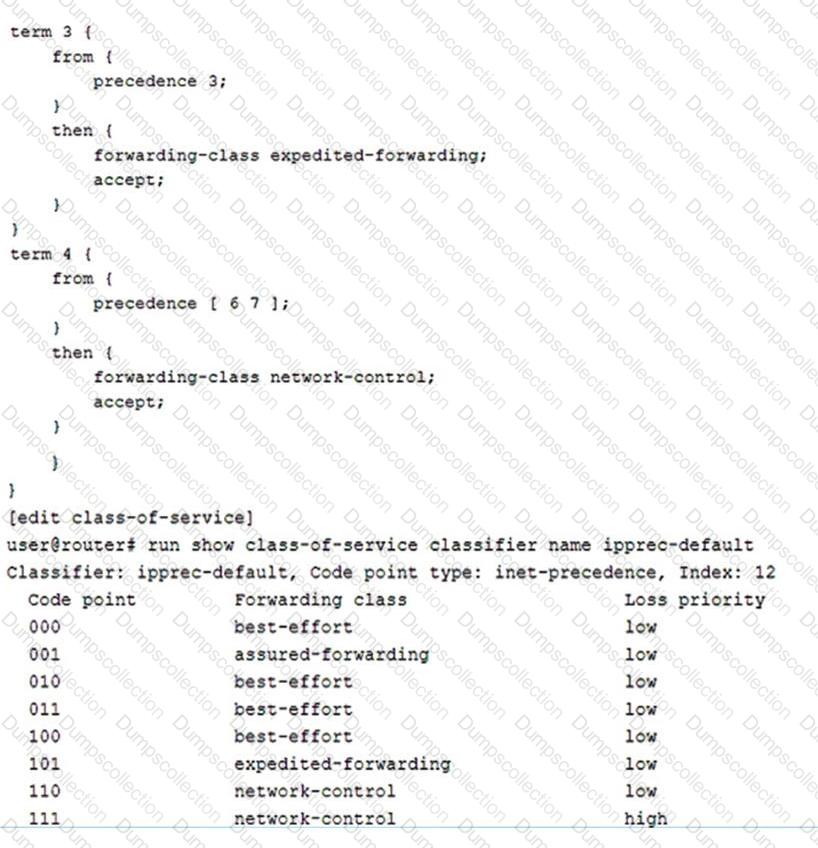
What are two similarities between OSPFv2 and OSPFv3? (Choose two.)
A user is attempting to watch a high-definition video being streamed from the media server over the network. However, the user complains that the experienced video quality is poor. While logged on to router B, a Juniper Networks device, you notice that video packets are being dropped.
In this scenario, what would solve this problem?
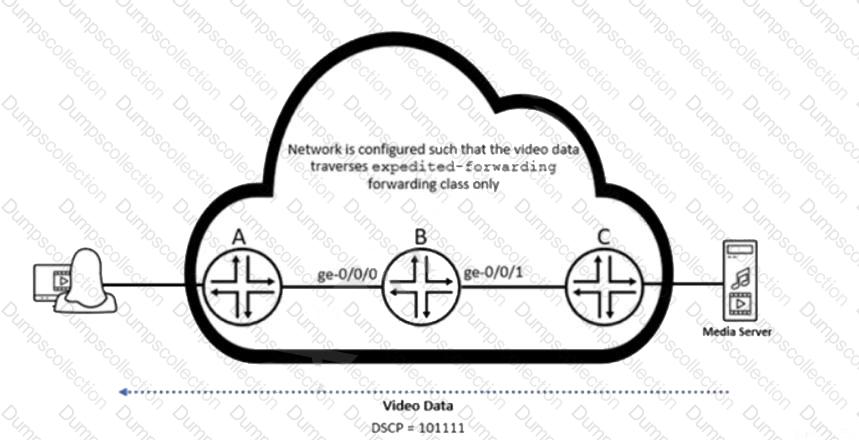
You are deploying an 802.1X solution and must determine what would happen if clients are unable to re-authenticate to the RADIUS server.
In this scenario, which configuration would provide access to the network if the supplicant is already authenticated?
Your enterprise network is running BGP VPNs to support multitenancy. Some of the devices with which you peer BGP do not support the VPN NLRI. You must ensure that you do not send BGP VPN routes to the remote peer.
Which two configuration steps will satisfy this requirement? (Choose two.)
Which three MSTP parameters must match on all switches in the same MST region? (Choose three.)
Your network is multihomed to two ISPs. The BGP sessions are established; however, the ISP peers are not receiving any routes.
Which two statements are correct about troubleshooting your configuration? (Choose two.)
You recently committed a change to a router to reject OSPF routes sourced from area 10. However, you are still seeing area 10 routes in the routing table.
Referring to the exhibit, which statement is correct?
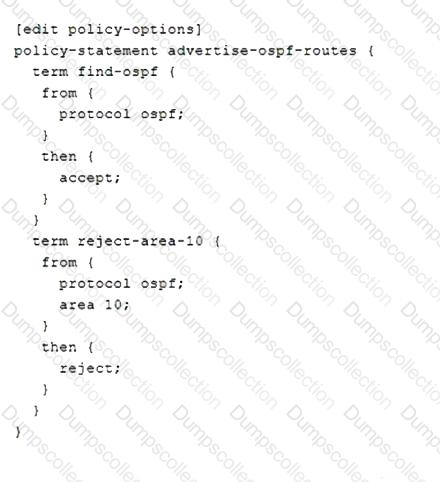
You are asked to configure an 802.1X solution that supports dynamic VLAN assignment.
In this scenario, which two modes support using vendor-specific attributes (VSAs)? (Choose two.)
Referring to the exhibit, ServerA sends a single IP packet destined to 10.0.0.127.
Which two statements correctly describe the behavior of the resulting outbound VXLAN packets that contain the original packet destined to 10.0.0.127? (Choose two.)
